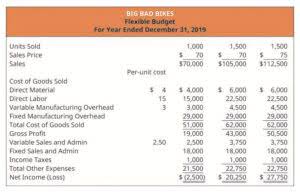16 Apr Authorized Shares vs Outstanding Shares: What’s the Difference?

Each time stock is issued, the directors will decide how much must be received for the shares. Authorized shares is the total number of shares of stock the total number of shares held by all shareholders in a company is called the that the board of directors are “authorized” to issue to shareholders. The board may issue all the shares now, or issue some now, and some later. Calculate shares outstanding by subtracting treasury shares (shares repurchased by the company) from the total shares issued by the company. It is essential to note that outstanding shares can fluctuate due to events such as stock buybacks or secondary offerings. Stock buybacks, for instance, reduce the number of outstanding shares, potentially boosting the company’s earnings per share (EPS) and making each share more valuable.
Types of issued shares
Some states have minimum capitalization requirements to insure that corporations have a bare minimum of assets before starting operations. Since shareholders are somewhat insulated from lawsuits against a corporation, these assets provide a means to pay any potential lawsuit winners. There is no minimum number of shares that must Accounting for Churches be authorized in the articles of incorporation.
- Large lot trades by investors of closely held shares could significantly affect the stock’s price and the stock’s volatility.
- Despite the fact that both kinds of shares indicate ownership in the corporation, their effects on shareholders and prospective investors are different.
- Shares that are issued or sold to investors from the available number of authorized shares are known as outstanding shares.
- Outstanding shares provide insights into a company’s size, ownership structure, and market capitalization.
- Understanding them is crucial for investors as it provides information about a company’s ownership structure and financial health.
- They use these shares to smooth out fluctuations due to stock buybacks.
Why are Outstanding Shares Important?
Additionally, Common stock represents the class of shareholders who shall be paid a dividend last, after the Preferred shareholders are paid first (if any exist). If there are no Preferred contra asset account shareholders, then the dividend amounts are split equally among the Common shareholders. What is the relationship between the face value of the shares and the value of the company? Focusing on outstanding shares as a metric has both benefits and limitations for investors. From these categories of shares, investors can get a complete view of how the stock behaves in a company. This helps them to make better decisions about where they want to put their money.

How Does the Calculation of Weighted Average Shares Outstanding Affect EPS?
- This total method helps in bettering the skill to move around the stock market, comprehend how it works and steer clear of risky investments.
- Whether through stock issuances, buybacks or stock splits, the number of outstanding shares can fluctuate, influencing both a company’s financial strategy and investor returns.
- Companies typically use reverse splits to increase their share price to meet minimum exchange listing requirements.
- These shares signify ownership in the business and grant the shareholder specific rights, including the ability to vote and receive dividends.
- Although splits usually increase market involvement and possibly raise share prices, reverse splits might enhance stock perception yet lessen liquidity.
- This number also provides insight into how ownership is distributed between institutional investors, company insiders and the general public.
When evaluating a company’s stock, it’s important to distinguish between shares outstanding and floating shares, as these figures provide insights into the stock’s liquidity and voting power. Most notably, short interest usually is measured as a percentage of the float, rather than shares outstanding. This is because short sellers, when choosing to cover, can only buy the shares actually in the float.

Splits can make it easier for a larger group of people to buy shares, enhancing marketability and liquidity. Issued shares are the total number of shares a company has officially issued. This includes any shares that have been bought back by the company and kept as treasury shares. Often, this count stays fixed and only alters with fresh share issuances or when old ones are retired. It gives an overall gauge of a firm’s equity capital, reflecting its past history in raising funds through equities.

Stock dividends (bonus shares)
So, a corporation might have 10 million authorized shares but only issue 8 million. State law specifies that shares of stock in the corporation will be issued under the direction of the board of directors. But, since the corporation is set up to benefit the shareholders, the shareholders set, or limit, the number of shares the directors are “authorized”, or allowed, to issue.




Sorry, the comment form is closed at this time.